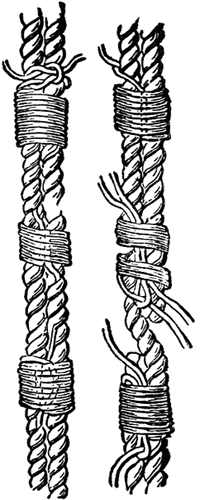 Consciousness, as we’ve noted before, is a most interdisciplinary topic, and besides the neurologists, the philosophers, the AI people, the psychologists and so on, the novelists have also, in their rigourless way, delved deep into the matter. Ever since the James boys (William and Henry) started their twin-track investigation there has been an intermittent interchange between the arts and the sciences. Academics like Dan Lloyd have written novels, novelists like our friend Scott Bakker have turned their hand to serious theory.
Consciousness, as we’ve noted before, is a most interdisciplinary topic, and besides the neurologists, the philosophers, the AI people, the psychologists and so on, the novelists have also, in their rigourless way, delved deep into the matter. Ever since the James boys (William and Henry) started their twin-track investigation there has been an intermittent interchange between the arts and the sciences. Academics like Dan Lloyd have written novels, novelists like our friend Scott Bakker have turned their hand to serious theory.
Recently we seem to have had a new genre of invented brain science. We could include Ian McEwan’s fake paper on De Clerambault syndrome, appended to Enduring Love; recently Sebastian Faulks gave us Glockner’s Isthmus; now, in his new novel A Box of Birds Charles Fernyhough gives us the Lorenzo Circuit.
The Lorenzo Circuit is a supposed structure which pulls together items from various parts of the brain and uses them to constitute memories. It’s sort of assumed that the same function thereby provides consciousness and the sense of self. Since it seems unlikely that a distinct brain structure could have escaped notice this long, we must take it that the Lorenzo is a relatively subtle feature of the connectome, only identifiable through advanced scanning techniques. The Lycée, which despite its name seems to be an English university, has succeeded in mapping the circuit in detail, while Sansom, one of those large malevolent corporate entities that crop up in thrillers, has developed new electrode technology which allows safe and detailed long-term interference with neurons. It’s obvious to everyone that if brought together these two discoveries would provide a potent new technology; a cure for Alzheimer’s is what seems to be at the forefront of everyone’s minds, though I would have thought there were far wilder and more exciting possibilities. The story revolves around the narrator, Dr Yvonne Churcher, an academic at the Lycée, and two of her undergraduate students, Gareth and James.
Unfortunately I didn’t rate the book all that highly as a novel. The plot is put together out of slightly corny thrillerish elements and seems a bit loosely managed. I didn’t like the characters much either. Yvonne seems to be putty in the hands of her students, letting Gareth steal the Lycée’s crucial research without seeming to hold the betrayal of her trust against him at all, and being readily seduced by the negligent James, a nonsense-talking cult member who calls her ‘babe’ (ack!). I’ve seen Gareth described as a “brilliant” character in reviews elsewhere, but sadly not much brilliance seems to be on offer. In fact to be brutal he seemed to me quite a convincing depiction of the kind of student who sits at the back of lectures chuckling to himself for no obvious reason and ultimately requires pastoral intervention. Apart from nicking other people’s theories and data, his ideas seem to consist of a metaphor from Plato, which he interprets with dismal literalism.
This metaphor is the birds thing that provides the title and up to a point, the theme of the book. In the Theaetetus, Plato makes a point about how we can possess knowledge without having it actually in our consciousness by comparing it to owning an aviary of birds without having them actually in your hand. In Plato’s version there’s no doubt that there’s a man in the aviary who chooses the birds to catch; here I think the idea is more that he flocking and movement of the birds itself produces higher-level organisation analogous to conscious memory.
Yvonne is a pretty resolute sceptic about her own selfhood; she can’t see that she is anything beyond the chance neurochemical events which sweep through her brain. This might indeed explain her apparent passivity and the way she seems to drift through even the most alarming and hare-brained adventures, though if so it’s a salutary warning about the damaging potential of overdosing on materialism. Overall the book alludes to more issues than it really discusses, and gives us little side treats like a person whose existence turns out to be no more than a kind of narrative convention; perhaps it’s best approached as a potential thought provoker rather than the adumbration of a single settled theory; not necessarily a bad thing for a book to be.
Yvonne’s scepticism did cause me to realise that I was actually rather hazy on the subject; what is it that people who deny the self are actually denying, and are they all denying the same thing? There are actually quite a few options.
- I think all self-sceptics want to deny the existence of the traditional immaterial soul, and for some that may really be about all. (To digress a bit, there are actually caverns below us at this point which have not been explored for thousands of years, if ever: if we were ancient Egyptians, with their complex ontology of multiple souls, we should have a large range of sceptical permutations available; denying the ba while affirming the khaibit, say. Our simpler culture, perhaps mercifully, does not offer us such a range of refinedly esoteric entities in which to disbelieve, but those of a philosophical temperament may be inclined to cast a regretful glance towards those profoundly obscure imaginary galleries.)
- Some may want to deny any sense, or feeling, of self; like Hume they see only a bundle of sensations when they look inside themselves. I think there is arguably a quale of the self; but these people would not accept it.
- Others, by contrast, would affirm that the sense of self is vivid, just not veridical. We think there’s a self, but there’s nothing actually there. There’s scope for an interesting discussion about what would have to be there in order to prove them wrong – or whether having the sense of self itself constitutes the self.
- Some would say that there is indeed ‘something’ there; it just isn’t what we think it is. For example, there might indeed be a centre of experience, but an epiphenomenal one; a self who has no influence on events but is in reality just along for the ride.
- Logically I suppose we could invert that to have a self that really did make the decisions, but was deluded about having any experiences. I don’t think that would be a popular option, though.
- Some would make the self a purely social construct, a matter of legal and moral rights and privileges, a conception simply grafted on to an animal which in itself, or by itself, would lack it.
- Some would deny only that the self provides a break in the natural chain of cause and effect. We are not really the origin of anything, they would say, and our impression of being a freely willing being is mistaken.
- Some radical sceptics would deny that even the body has any particular selfhood; over time every part of it changes and to assert that I am the same self as the person of twenty years ago makes no sense.
As someone who, on the whole, prefers to look for a tenable account of the reality of the self, the richness of the sceptical repertoire makes me feel rather unimaginative.

